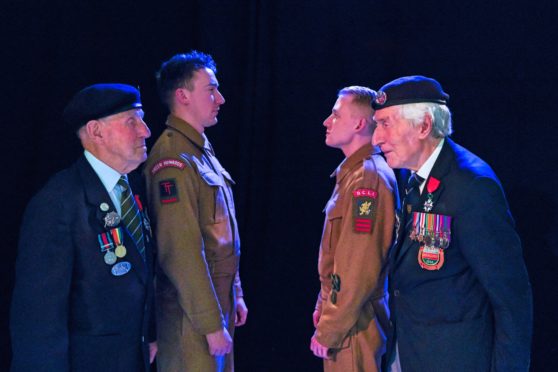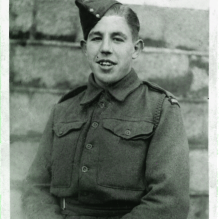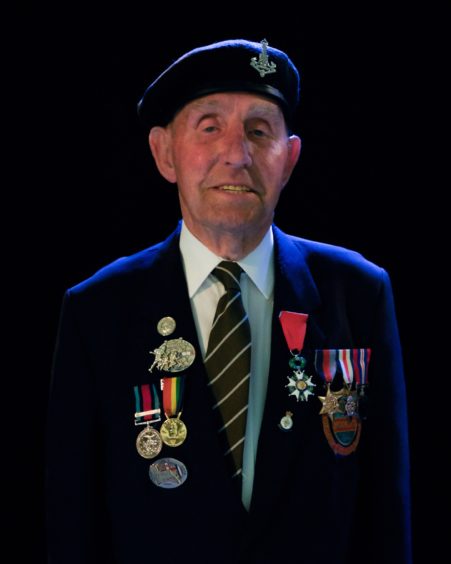As part of the D-Day 75 commemorations, a special play is bringing to life the powerful testimonies of five Normandy veterans for Edinburgh Fringe audiences next week. Bomb Happy tells the story of inexperienced young conscripts who find themselves part of one of the most dangerous operations of the Second World War ordinary young men in extraordinary circumstances.
A ‘verbatim’ play, the dialogue is created from the precise words of the veterans themselves.
Yorkshire man Ken Cooke, now 93, is one of the five veterans whose experiences are the essence of the play.
As an 18-year-old Green Howard, he landed on Gold Beach at around 7.45am on June 6, 1944 as part of the second wave.
Ken had joined up in 1943 and this was his first experience of combat, his first time abroad and he had precious little training for a beach assault.
So was he scared?
“I’m often asked that and the answer is no,” he says. “It was like a Boy Scout adventure for me at the beginning. I was looking over the side of the landing craft as it went in and at all the fireworks ahead.
“It was only on the second day that things changed. I’d ask someone if they’d seen Tommy or Jack or someone, and they would be dead or injured.
“It started to soak in that these bullets were very real and they were headed for us.”
Ken and his comrades spent weeks fighting through the French countryside. Then, on July 4, a shell hit a tree in the hedgerow where a group of them were sheltering.
The next thing he knew he was in a field hospital operating theatre. From there he was returned to the UK and ended up in the wartime Stracathro Hospital near Brechin.
One end of the ward was full of wounded soldiers, but the other end had children of about 10 to 12 years old. After a couple of days they plucked up their courage and started to befriend the soldiers – even jumping up and down on the beds.
Ken, now 93, wonders if any of them are still around: “I remember it so well and over the years I have often wondered if any of those children are still alive and remember meeting us in the hospital.”
Some years ago Ken was reunited with one of the nurses, Cecilia Maggetti, from Bridge of Don, who was then in her mid 20s, who wrote letters home for him because his hands were in plaster.
Ken has fond memories of Scotland. They were treated to tickets to watch the local football team played and, recalls Ken, a group of them were in a café in Brechin when: “A lovely Scottish man came up to us and said ‘I believe we owe you lads a free lunch’.”
Despite the seriousness of his wounds Private Cooke returned to frontline service and was assigned to the Highland Light Infantry in Belgium to help make up for losses they had suffered as they pushed back the Nazis.
And it was with the HLI that he took part in another critical moment of the war – the crossing of the Rhine.
He said: “We were all dug in and ready and then the artillery started – firing against the German side of the river. I’d never heard noise like it. It was simply incredible.”
The troops were ushered into small boats and crossed the water. They pushed hard and fast into enemy territory, ending up in an abandoned trench.
He vividly remembers that there were parachutes around the place, some hanging from the trees.
“So that’s how we spent the night. We gathered them in and slept in the trench wrapped in parachutes.”
Ken would very much like to hear from anyone who was with the HLI and crossed the Rhine at the same time.
“In all the years that have passed I have been to lots of events and asked around but have only ever met one other person who was there. It would be marvellous to meet any others.”
Bomb Happy is suitable for 12+ and runs on August 13-18 and 20-25 at Army@TheFringe, Hepburn House Reserve Centre, 89 East Claremont Street, EH7 4HU (Venue 210). Ken hopes to attend the performances of Bomb Happy on August 16, 17, 23 and 25.
Army@TheFringe and Everwitch theatre company would be delighted to hear from any HLI veterans who crossed the Rhine at the same time as Ken, or any of the children who were at Stracathro hospital when he was there, and to welcome them along to the show as their guests.












